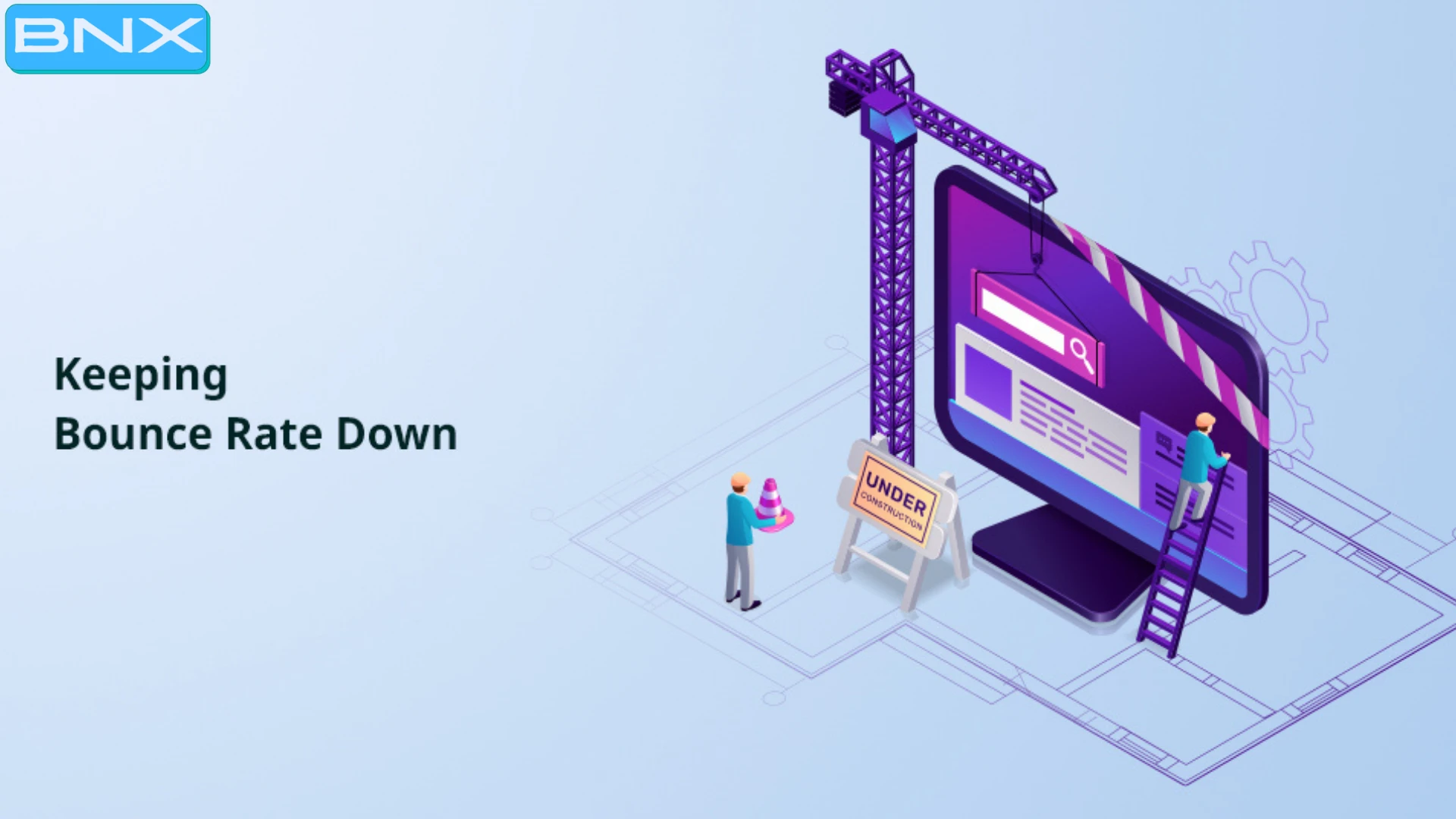Keeping Bounce Rate Down

Do you ever visit a website and abandon it immediately?
There may be many reasons for closing the website as soon as it opens. A few common reasons might be loading speed, inappropriate content, and imbalanced site structure. When you close the website within 1 to 3 seconds, it increases the bounce rate of that particular website. In addition, Google’s search engine studies each user’s behavior and pushes website ranking down if expectations are not met.

This may be one of the reasons you are not getting enough traffic on your website. Do you want to reduce bounce rate? Read this blog to gain a comprehensive understanding of your lack of traffic and how to reduce bounce rate.

What is bounce?
When a user visits a website and returns to the search results within a few seconds, this is known as bounce.
If a visitor closes the website without exploring the presented information, products, and services, then the bounce rate of the web site increases. Bounce rate is the calculation of all users who accessed the website but didn’t click or visit related web pages or links.
What is a good bounce rate?
A bounce rate between 26% and 40% is excellent. If your website’s bounce rate is over 70%, it is of critical importance to correct issues. Consider immediate website modifications to reduce bounce rate.
When a user leaves abruptly, it increases your bounce rate.
Top 5 reasons for bad bounce rate
- Inappropriate landing page or no landing page at all
- Loading speed
- Low-quality content
- UI/UX optimization issues
- Bad or no call to action (CTA), unwanted forms and popups
These are the main causes of a high bounce rate. These issues turn a customer away and, in doing so, decreases your revenue. When the bounce rate increases, the conversion rate decreases.
To eliminate these problems, you can redesign your website with proper content.
Follow these steps to develop an interactive website:
- Analyze your current website performance
- Understand and study your audience
- Check the usability
- Perform user testing
- Create a demo website
- Add marketing content, landing pages, and CTA
- Increase technical development
- Complete A/B testing
- Enhance marketing
To improve the conversion rate faster, you can leave eCommerce deployment to experts. They follow the best website development procedure and give you advanced solutions. These experts follow all the search engine guidelines in the development process to drive more traffic.
6 ways to decrease your bounce rate
- Deliver clean content
Follow a proper structure to present information. This makes it easier for visitors to read content.
You can simplify your content by adding bullet points, pictures, videos, infographics, subheadings, and highlighting keywords
Follow the storytelling mode to make content effective.
- Optimize web page
Webpages that take more than four seconds to load are impacting your business. If the website fails to load at a reasonable speed, users will go back to search results and select a competitor’s website.
Speed up your website by reducing file sizes. Around 70% of people say that the speed of a page affects their willingness to buy from an online retailer. (UNBOUNCE)

- Use attractive CTAs
Adding multiple or big CTAs can create a negative impression. A CTAs at a suitable place with a good design.
Consider making CTAs small with muted colors.
- Optimize contact forms and pop-up
Too many fields can overwhelm customers. If they are asked for too much information on the landing page, they will abandon the website and create a bounce back.
Redesign your contact form and keep only necessary fields.
Pop-ups are good for gathering customer information and sign-ups for the newsletter. They can also annoy users at times.
You can adjust your pop-up size and timings so users can have enough time to make a decision. Remove popups from product pages and landing pages so users can redirect easily to another page.
- Improve landing pages
- Show the exact amount of details on your landing page. Not too much and not too little.
- Simplify the redirection and link it to appropriate pages.
- Make the landing page design professional.
- If you have more keywords, add multiple landing pages.
- Create a mobile-friendly website
Consumers are more frequently using mobile devices to browse the internet. Most likely, your site visitors are using mobile devices to explore your products and services. Ensure your website is easily accessible on all the devices.
Cross-check and test your website on different mobile devices to check the responsiveness.
Important Statistics on Google
- Google data shows that more than half of overall web traffic comes from mobile, however, desktop conversion rates are higher.
- The average time it takes a mobile landing page to load is 22 seconds.
- Google data indicates that almost 53% of mobile site visitors will leave a page if it takes longer than three seconds to load.
- Bounce rates are highest for mobile shoppers, compared to tablet and desktop users.
- Almost 77% of mobile users say they are more likely to purchase from mobile sites that offer them the ability to make purchases quickly.
- When load time is decreased by 0.1, retail customer engagement increases by 5.2%.
Summary
High bounce rates show that a website is not properly designed and it needs an appropriate solution to increase the conversion rate.
Bounce rates play a major role in ranking websites on search engines. If you want to drive more traffic to your website, try to reduce bounce rate and keep it as low as possible.







Pretty! This has been a really wonderful post. Many thanks for providing these details.